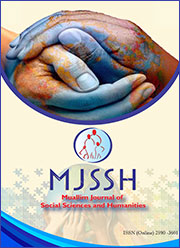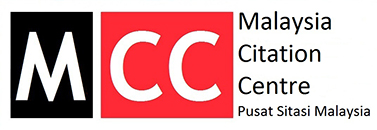Grade 13 commerce students' perceptions on English language learning at a government school in Nintavur Educational Division
Keywords:
commerce students' perceptions, English speaking ability, ESL, government schoolAbstract
This study aims to comprehensively understand Grade 13 Commerce students' perceptions of English language learning at a government school in the Nintavur Educational Division. The research identifies challenges students face, evaluates the effectiveness of learning resources and teaching aids, and assesses overall learning experiences and teachers' attitudes. Employing a mixed-methods approach, the study integrated quantitative and qualitative data collection, involving 74 students, two English teachers, and educational stakeholders, including the Principal and In-Service Advisor (ISA). Data were gathered through structured questionnaires, semi-structured interviews, focus group discussions, and classroom observations. Quantitative analysis revealed students' fear of making mistakes, lack of confidence, and concerns about pronunciation as significant barriers to learning English. The effectiveness of learning resources was met with mixed opinions, indicating uncertainty about their impact. The study also highlighted dissatisfaction with current teaching methods, with a noted disconnect between teaching practices and students' needs. Chi-Square analysis showed no significant gender differences in perceptions of learning experiences or teachers' attitudes. Qualitative insights from interviews and observations suggested gaps in textbooks and a need for more interactive and practical teaching approaches. The study concludes that addressing emotional barriers, improving teaching resources, and enhancing teacher training are critical for advancing English language education. A multifaceted approach, incorporating better pedagogical strategies, relevant resources, and supportive learning environments, is essential for overcoming the identified challenges and improving students' English language proficiency.
References
Abdullaev, Z. K. (2021) Second Language Learning. Mental Enlightenment Scientific-Methodological Journal: 2021(06), https://uzjournals.edu.uz/tziuj/vol2021/iss06/1
Agudo, J. M. (2017). What EFL Student Teachers Think about their Professional Preparation: Evaluation of an English Language Teacher Education Programme in Spain. Australian Journal of Teacher Education, 42(8), 62–76. https://doi.org/10.14221/ajte.2017v42n8.5
Al-Mahrooqi, R. (2012). A student perspective on low English proficiency in Oman. International Education Studies, 5(6). https://doi.org/10.5539/ies.v5n6p263
Alyousif, R., & Alsuhaibani, Z. (2021). English language learning demotivating factors for Saudi High School EFL students. English Language Teaching, 14(8), 29. https://doi.org/10.5539/elt.v14n8p29
Blake, H. L., Kneebone, L. B., & McLeod, S. (2017). The impact of oral English proficiency on humanitarian migrants’ experiences of settling in Australia. International Journal of Bilingual Education and Bilingualism, 22(6), 689–705. https://doi.org/10.1080/13670050.2017.1294557
Brown, H. D. (2001). Teaching by principles: An interactive approach to language pedagogy. New York: Longman.
Carter, R., & McCarthy, M. (1995). Grammar and spoken language. Applied Linguistics, 16(2), 141-158.
Cheng, L., Yunus, M., & Mohamad, M. (2016). Issues contributing to low performance in English in a national school in Song, Sarawak. Proceedings of the ICECRS, 1(1). https://doi.org/10.21070/picecrs.v1i1.519
Chou, M. (2018). Speaking anxiety and strategy use for learning English as a foreign language in full and partial English‐Medium instruction contexts. TESOL Quarterly, 52(3), 611–633. https://doi.org/10.1002/tesq.455
Clifford, R. T. (1987). Language teaching in the Federal Government: A personal perspective. Annals of the American Academy of Political and Social Science, 490, 72-85.
Freiermuth, M. R., & Huang, H. (2018). Assessing willingness to communicate for academically, culturally, and linguistically different language learners. In Advances in educational technologies and instructional design book series (pp. 57–85). https://doi.org/10.4018/978-1-5225-5140-9.ch004
Gajadeera, S. R. (2002). English language at the crossroads. In Proceedings of the 9th International Conference on Sri Lanka Studies (pp. 120-133). University of Ruhuna, Matara, Sri Lanka.
Geng, B. (2016). Study on Challenge and Countermeasures College English Faces from the Viewpoint of Curriculum Theory. Proceedings of the 2016 3rd International Conference on Management, Education Technology and Sports Science (METSS 2016). https://doi.org/10.2991/metss-16.2016.85
Himmatova, Nodira Normamatovna (2023) Psychological Aspects of Learning a Foreign Language. Spanish Journal of Innovation and Integrity, 13. pp. 1-6. ISSN 2792-8268
Huang, F., Teo, T., & Zhou, M. (2017). Factors Affecting Chinese English as a Foreign language Teachers’ technology acceptance: A Qualitative study. Journal of Educational Computing Research, 57(1), 83–105. https://doi.org/10.1177/0735633117746168
Karunaratne, I. M. (2003). Teaching English in urban Sri Lanka: Some pedagogical issues. In Proceedings of the 9th International Conference on Sri Lankan Studies (pp. 77-89).
Lai, C., Hu, X., & Lyu, B. (2017). Understanding the nature of learners’ out-of-class language learning experience with technology. Computer Assisted Language Learning, 31(1–2), 114–143. https://doi.org/10.1080/09588221.2017.1391293
Lee, J., & Heinz, M. (2016). English Language learning Strategies reported by advanced language learners. Journal of International Education Research, 12(2), 67–76. https://doi.org/10.19030/jier.v12i2.9629
Li, H. (2022). Classroom enjoyment: relations with EFL students’ disengagement and burnout. Frontiers in Psychology, 12. https://doi.org/10.3389/fpsyg.2021.824443
Lin, C., & Hwang, G. (2018). A Learning Analytics approach to investigating factors affecting EFL students’ oral performance in a flipped classroom. Educational Technology & Society, 21(2), 205–219. http://www.j-ets.net/ETS/journals/21_2/18.pdf
Liu, X. (2023). Examining student burnout causes among English as a foreign language students: focus on school climate and student growth mindset. Frontiers in Psychology, 14. https://doi.org/10.3389/fpsyg.2023.1166408
Loewen, S., & Sato, M. (2018). Interaction and instructed second language acquisition. Language Teaching, 51(3), 285–329. https://doi.org/10.1017/s0261444818000125
Lou, N. M., & Noels, K. A. (2019). Promoting growth in foreign and second language education: A research agenda for mindsets in language learning and teaching. System, 86, 102126. https://doi.org/10.1016/j.system.2019.102126
Luetke-Stahlman, B. (1986). Building a language base in Hearing-Impaired Students. American Annals of the Deaf, 131(3), 220–228. https://doi.org/10.1353/aad.2012.0836
Mirza, M., Harrison, E. A., Miller, K. A., & Jacobs, E. A. (2021). Indicators of Quality Rehabilitation Services for Individuals with Limited English Proficiency: A 3-Round Delphi Study. Archives of Physical Medicine and Rehabilitation, 102(11), 2125–2133. https://doi.org/10.1016/j.apmr.2021.04.020
Murray, N., & Hicks, M. (2014). An institutional approach to English language proficiency. Journal of Further and Higher Education, 40(2), 170–187. https://doi.org/10.1080/0309877x.2014.938261
Nel, N., & Müller, H. (2010). The impact of teachers’ limited English proficiency on English second language learners in South African schools. South African Journal of Education, 30(4), 635–650. https://doi.org/10.15700/saje.v30n4a393
Nunan, D. (1991). Language teaching methodology: A textbook for teachers. New York: Prentice Hall International.
Nunan, D. (2004). Task-based teaching. Cambridge: Cambridge University Press.
Opperman, I. (2020). Time limits and English proficiency tests: Predicting academic performance. African Journal of Psychological Assessment, 2. https://doi.org/10.4102/ajopa.v2i0.20
Phakiti, A., Hirsh, D., & Woodrow, L. (2013). It’s not only English: Effects of other individual factors on English language learning and academic learning of ESL international students in Australia. Journal of Research in International Education, 12(3), 239–258. https://doi.org/10.1177/1475240913513520
Raheem, R. (2004). English language teaching in Sri Lanka: Future perfect? In R. Raheem & A. Hamlyn (Eds.), Innovation in English language teaching: Selected papers from the 2nd SLELTA International Conference (pp. 29-44). Colombo: British Council.
Rasheedha Banu, S., & Nishanti, R. (2017). Difficulties faced by college students in speaking English: A sociological reflection. International Journal of Trend in Research and Development, 4(3), 435-436.
Richards, J., & Rodgers, T. (2001). Approaches and methods in language teaching (2nd ed.). Cambridge: Cambridge University Press.
Samaranayake, S. W. (2016). Oral competency of ESL/EFL learners in Sri Lankan rural school context. SAGE Open, 6(2), 1-10. https://doi.org/10.1177/2158244016654202
Scott, J. A., & Hoffmeister, R. J. (2017). Superordinate Precision: an examination of academic writing among bilingual deaf and hard of hearing students. Journal of Deaf Studies and Deaf Education, 23(2), 173–182. https://doi.org/10.1093/deafed/enx052
Souriyavongsa, T., Rany, S., Abidin, M. J. Z., & Mei, L. L. (2013). Factors causing low English language learning: A case study in the National University of Laos. International Journal of English Language Education.
Suryani, I., Suarnajaya, W., & Pratiwi, A. (2020). Investigating the inhibiting factors in speaking English faced by senior high school students in Singaraja. IJoLE (International Journal of Language Education), 48–58. https://doi.org/10.26858/ijole.v4i2.10054
Taiqin, D. (1995). “I can try it at least”: A strategy for effective inter-class oral communication. English Teaching Forum, 33(1), 28-29.
Taqi, H. A., Al-Nouh, N. A., & Akbar, R. S. (2014). The perspectives of students in the College of Basic Education on the characteristics of effective English Language Teachers. English Language Teaching, 7(3). https://doi.org/10.5539/elt.v7n3p121
The earnings of immigrants in the United States. (1999). American Journal of Economics and Sociology/the American Journal of Economics and Sociology, 58(1), 43–56. https://doi.org/10.1111/j.1536-7150.1999.tb03282.x
Ur, P. (2006). A course in language teaching: Practice and theory (13th ed.). Cambridge: Cambridge University Press.
Urrutia, M., & Vega, H. (2010). Encouraging teenagers to improve speaking skills through games in a Colombian public school. PROFILE: Issues in Teachers' Professional Development, 12(1), 11-31.
Vency, H. J., & Ramganesh, E. (2013). Is language proficiency taken care of at higher education level? Need for self-efficacy of post graduate students. Journal of Language Teaching and Research, 4(6). https://doi.org/10.4304/jltr.4.6.1176-1183
Wickremaratne, J., Wimalaratne, G., & Goonetilleke, V. (2008). A Blend of Adaptive and Digital Learning towards Language Proficiency. 2008 4th International Conference on Information and Automation for Sustainability. https://doi.org/10.1109/iciafs.2008.4783942
Wijesekera, H. (2014). Dreams deferred: English language teaching in Sri Lanka. In H. V. Ratwatte (Ed.), Vistas Journal of Humanities and Social Sciences, 7 & 8 (pp. 50-70). The Open University of Sri Lanka. https://ssrn.com/abstract=2438893 or http://dx.doi.org/10.2139/
Yu, X., Wang, Y., & Liu, F. (2022). Language Learning Motivation and Burnout among English as a Foreign Language Undergraduates: The Moderating Role of Maladaptive Emotion Regulation Strategies. Frontiers in Psychology, 13. https://doi.org/10.3389/fpsyg.2022.808118
Published
 Abstract Display: 0
Abstract Display: 0  PDF Downloads: 0
PDF Downloads: 0 Issue
Section

This work is licensed under a Creative Commons Attribution-NonCommercial 4.0 International License.














 This work is licensed under a
This work is licensed under a